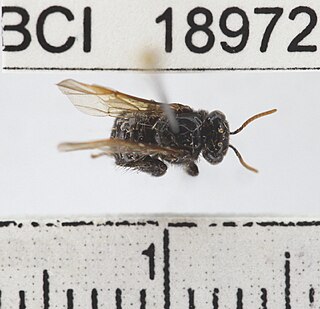
The silver arowana is a South American freshwater bony fish of the family Osteoglossidae. Silver arowanas are sometimes kept in aquariums, but they are predatory and require a very large tank.
The black arowana is a South American freshwater bony fish of the family Osteoglossidae. Black arowanas are sometimes kept in aquariums, but they are predatory and require a very large tank. It is generally common, but large numbers are caught as food and for the aquarium fish trade.
Neusticomys is a genus of semiaquatic, animalivorous South American rodents in the family Cricetidae.

Alexandre Rodrigues Ferreira was a Portuguese naturalist born in Brazil. He undertook an extensive journey which crossed the interior of the Amazon Basin to Mato Grosso, between 1783 and 1792. During this journey, he described the agriculture, flora, fauna, and native inhabitants.
Cetopsidium is a genus of catfishes of the family Cetopsidae.
Denticetopsis is a genus of catfishes of the family Cetopsidae.

Mopalia spectabilis, commonly known as the red-flecked mopalia, is a species of chiton.
Cetopsidium pemon is a species of whale catfish found in the Caroni River and the Caura River basins, southern tributaries of the Orinoco in eastern Venezuela, the Meta River basin of the western portions of the Orinoco system in eastern Colombia, and the upper portions of the Branco River in northern Brazil.
Ferreira's fish-eating rat is a species of rodent in the family Cricetidae. It is known only from primary lowland tropical rainforest. It is named after 18th-century Brazilian naturalist Alexandre Rodrigues Ferreira.

Mopalia is a genus of chitons in the family Mopaliidae.
Fish-eating rat can refer to several related semiaquatic South American rodents of tribe Ichthyomyini:
Archolaemus is a genus of South American glass knifefishes. They occur in fast-flowing sections of rivers, including rapids, in the Amazon, Tocantins, São Francisco and Araguari basins. Depending on the exact species, they reach up to about 20–50 cm (8–20 in) in total length. During the day they hide in rocky crevices, but during the night they are active and feed on small invertebrates such as aquatic insect larvae.

Trochus ferreirai is a species of sea snail, a marine gastropod mollusk in the family Trochidae, the top snails.
Planodema is a genus of longhorn beetles of the subfamily Lamiinae, containing the following species:
Planodema ferreirai is a species of beetle in the family Cerambycidae. It was described by Stephan von Breuning in 1971.
Conasprella ferreirai is a species of sea snail, a marine gastropod mollusc in the family Conidae, the cone snails, cone shells or cones.

Loxopholis is a genus of lizards in the family Gymnophthalmidae. The genus is endemic to South America.
Loxopholis ferreirai is a species of lizard in the family Gymnophthalmidae. The species is endemic to Brazil.

Partamona is a genus of stingless bees in the family Apidae. Herbert Ferlando Schwarz in 1938 described the genus. The genus is found from Mexico to Brazil.
Archolaemus ferreirai is a species of glass knifefish endemic to Brazil where it is found in the Rio Mucajaí and Rio Uraricoera in the north-eastern portions of the Amazon basin. This species reaches a length of 34.2 cm (13.5 in).






